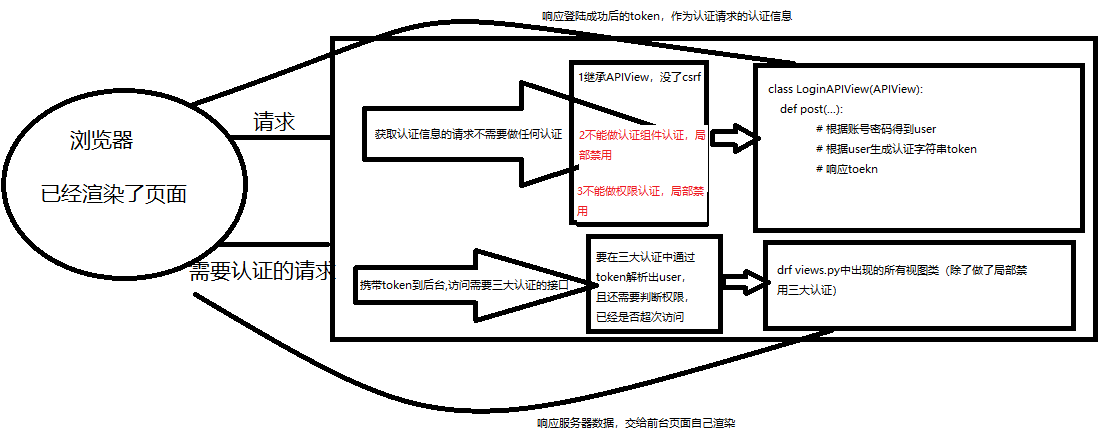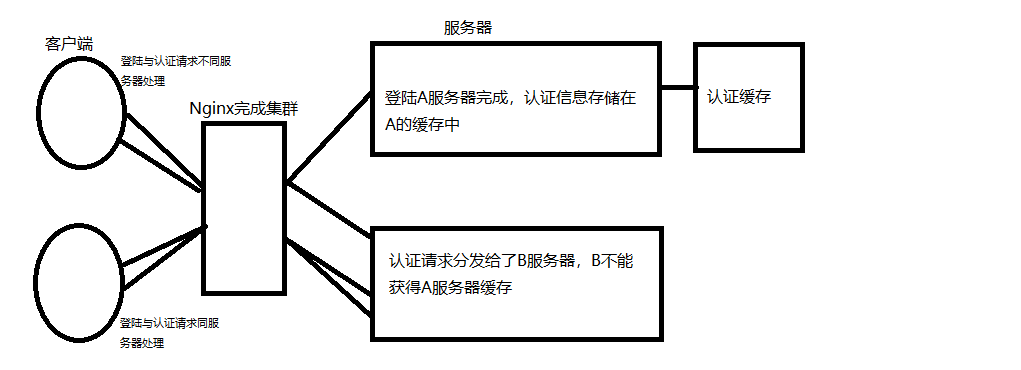目录
复习
"""
1、认证组件:校验认证字符串,得到request.user
没有认证字符串,直接放回None,游客
有认证字符串,但认证失败抛异常,非法用户
有认证字符串,且认证通过返回 用户,认证信息 元组,合法用户
用户存放到request.user | 认证信息存放到request.auth
自定义认证类
class MyAuthentication(BaseAuthentication):
def authenticate(self, request):
# 1)从request中拿auth字符串:return None | 继续
# 2)校验auth:抛异常 | (user, auth)
全局或局部配置
REST_FRAMEWORK = {
# 认证类配置
'DEFAULT_AUTHENTICATION_CLASSES': [
'自定义的认证类MyAuthentication',
],
}
class MyAPIView(APIView):
authentication_calsses = []
pass
2、权限组件:校验request.user是否拥有权限
有权限,返回True
无权限,返回False
自定义权限类:
class MyPermission(BasePermission):
def has_permission(self, request, view):
# 1)request.user或其他信息(请求方式)等判断:True | False
全局或局部配置
REST_FRAMEWORK = {
# 权限类配置
'DEFAULT_PERMISSION_CLASSES': [
'自定义的权限类MyPermission',
],
}
class MyAPIView(APIView):
permission_classes = []
pass
"""
频率类源码
入口
# 1)APIView的dispath方法中的 self.initial(request, *args, **kwargs) 点进去
# 2)self.check_throttles(request) 进行频率认证
# 频率组件核心源码分析
def check_throttles(self, request):
throttle_durations = []
# 1)遍历配置的频率认证类,初始化得到一个个频率认证类对象(会调用频率认证类的 __init__() 方法)
# 2)频率认证类对象调用 allow_request 方法,判断是否限次(没有限次可访问,限次不可访问)
# 3)频率认证类对象在限次后,调用 wait 方法,获取还需等待多长时间可以进行下一次访问
# 注:频率认证类都是继承 SimpleRateThrottle 类
for throttle in self.get_throttles():
if not throttle.allow_request(request, self):
# 只要频率限制了,allow_request 返回False了,才会调用wait
throttle_durations.append(throttle.wait())
if throttle_durations:
# Filter out `None` values which may happen in case of config / rate
# changes, see #1438
durations = [
duration for duration in throttle_durations
if duration is not None
]
duration = max(durations, default=None)
self.throttled(request, duration)
自定义频率类
# 1) 自定义一个继承 SimpleRateThrottle 类 的频率类
# 2) 设置一个 scope 类属性,属性值为任意见名知意的字符串
# 3) 在settings配置文件中,配置drf的DEFAULT_THROTTLE_RATES,格式为 {scope字符串: '次数/时间'}
# 4) 在自定义频率类中重写 get_cache_key 方法
# 限制的对象返回 与限制信息有关的字符串
# 不限制的对象返回 None (只能放回None,不能是False或是''等)
短信接口 1/min 频率限制
频率:api/throttles.py
from rest_framework.throttling import SimpleRateThrottle
class SMSRateThrottle(SimpleRateThrottle):
scope = 'sms'
# 只对提交手机号的get方法进行限制
def get_cache_key(self, request, view):
mobile = request.query_params.get('mobile')
# 没有手机号,就不做频率限制
if not mobile:
return None
# 返回可以根据手机号动态变化,且不易重复的字符串,作为操作缓存的key
return 'throttle_%(scope)s_%(ident)s' % {'scope': self.scope, 'ident': mobile}
配置:settings.py
# drf配置
REST_FRAMEWORK = {
# 频率限制条件配置
'DEFAULT_THROTTLE_RATES': {
'sms': '1/min'
},
}
视图:views.py
from .throttles import SMSRateThrottle
class TestSMSAPIView(APIView):
# 局部配置频率认证
throttle_classes = [SMSRateThrottle]
def get(self, request, *args, **kwargs):
return APIResponse(0, 'get 获取验证码 OK')
def post(self, request, *args, **kwargs):
return APIResponse(0, 'post 获取验证码 OK')
路由:api/url.py
url(r'^sms/$', views.TestSMSAPIView.as_view()),
限制的接口
# 只会对 /api/sms/?mobile=具体手机号 接口才会有频率限制
# 1)对 /api/sms/ 或其他接口发送无限制
# 2)对数据包提交mobile的/api/sms/接口无限制
# 3)对不是mobile(如phone)字段提交的电话接口无限制
认证规则图
django不分离

drf分类

认证规则演变图
数据库session认证:低效

缓存认证:高效

jwt认证:高效

缓存认证:不易并发

jwt认证:易并发

JWT认证
优点
"""
1) 服务器不要存储token,token交给每一个客户端自己存储,服务器压力小
2)服务器存储的是 签发和校验token 两段算法,签发认证的效率高
3)算法完成各集群服务器同步成本低,路由项目完成集群部署(适应高并发)
"""
格式
"""
1) jwt token采用三段式:头部.载荷.签名
2)每一部分都是一个json字典加密形参的字符串
3)头部和载荷采用的是base64可逆加密(前台后台都可以解密)
4)签名采用hash256不可逆加密(后台校验采用碰撞校验)
5)各部分字典的内容:
头部:基础信息 - 公司信息、项目组信息、可逆加密采用的算法
载荷:有用但非私密的信息 - 用户可公开信息、过期时间
签名:头部+载荷+秘钥 不可逆加密后的结果
注:服务器jwt签名加密秘钥一定不能泄露
签发token:固定的头部信息加密.当前的登陆用户与过期时间加密.头部+载荷+秘钥生成不可逆加密
校验token:头部可校验也可以不校验,载荷校验出用户与过期时间,头部+载荷+秘钥完成碰撞检测校验token是否被篡改
"""
drf-jwt插件
官网
https://github.com/jpadilla/django-rest-framework-jwt
安装
>: pip3 install djangorestframework-jwt
登录 - 签发token:api/urls.py
# ObtainJSONWebToken视图类就是通过username和password得到user对象然后签发token
from rest_framework_jwt.views import ObtainJSONWebToken, obtain_jwt_token
urlpatterns = [
# url(r'^jogin/$', ObtainJSONWebToken.as_view()),
url(r'^jogin/$', obtain_jwt_token),
]
认证 - 校验token:全局或局部配置drf-jwt的认证类 JSONWebTokenAuthentication
from rest_framework.views import APIView
from utils.response import APIResponse
# 必须登录后才能访问 - 通过了认证权限组件
from rest_framework.permissions import IsAuthenticated
from rest_framework_jwt.authentication import JSONWebTokenAuthentication
class UserDetail(APIView):
authentication_classes = [JSONWebTokenAuthentication] # jwt-token校验request.user
permission_classes = [IsAuthenticated] # 结合权限组件筛选掉游客
def get(self, request, *args, **kwargs):
return APIResponse(results={'username': request.user.username})
路由与接口测试
# 路由
url(r'^user/detail/$', views.UserDetail.as_view()),
# 接口:/api/user/detail/
# 认证信息:必须在请求头的 Authorization 中携带 "jwt 后台签发的token" 格式的认证字符串